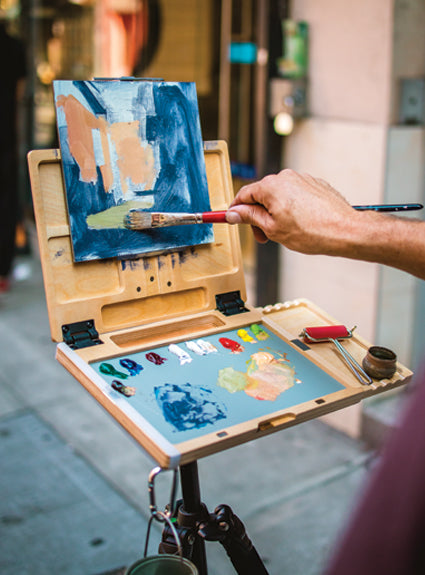
Initially, Todd aspired to be something of a sports star ... a dream he shared with his mother. He attended Massachusetts College of Art and Design, and later, the Academy of Art University in San Francisco CA, before landing in New York City chasing down artists he admired. He worked in graphic design for a top brand, and even applied to be an Uber driver to help support his passion for the arts. All of which afforded him great life experience, interesting stories, and quite a few useful skills. Eventually however, he became an accomplished artist, successful teacher, and best selling author.
Read More 
Before beginning to sell his paintings and teach art, John worked numerous jobs inside and outside of the art industry. He was in advertising and graphic design, managed a poster shop, ran errands for a more successful artist, and bar tended in New York City. All of these afforded him great life experience, some interesting stories, and quite a few useful skills. However, his most memorable employment opportunity began by accident.
Read More 
I love the outdoors. John Muir says “the clearest way into the universe is through a forest wilderness” and I concur. It is in the wilderness that I found my inspiration, where I was totally ‘in spirit’. I would receive healing and cleansing by nature. I decided to commit one day a week, a Friday, to plein air paint. I thought, “how hard could that be?” It turned out to be the most humbling experience I had ever had artistically and emotionally. It continues to be the most challenging thing to adapt to and learn, and as a result, the most rewarding.
Read More 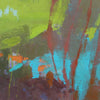
Like music, painting is about honing both the craft and the expressive voice. Like improvising with other musicians, I approach my painting as creating an immediate response to what is around me, free from pre-conceived notions.
Read More 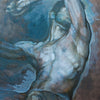
When I started teaching together with other artists at Chelsea Classical Studio like Rick Piloco, we would often talk shop and it seemed that a lot of materials we used were things we made ourselves or were hard to find, especially the naturally cleaned Linseed oil and alternative solvents. So eventually we put things together and started a small artist-run oil painting materials company: Chelsea Classical Studio Fine Art Materials.
Read More 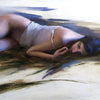
Ultimately, as I studied more and more, I was unknowingly thrust away from a traditional atelier mentality of painting things one way. Rather than thinking there was a best way for doing everything, I sought out the best way to approach each individual situation. I wanted to be able to paint something successfully in 20 minutes or 200 hours; to paint sunsets or baroquely lit models; to have glass-like paint films, or those broken and loose.
Read More 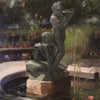
Painting outdoors sharpens an artist’s ability to adapt to change while holding on to an aesthetic vision. Whenever I’m teaching a portrait or figure class or workshop I tell my students to embrace the micro-moves the model makes. People can get frustrated as a model naturally settles into a pose. Muscles relax, expression shifts, even the inhale and exhale can change the posture and appearance of a pose; but all those little adjustments add life to a drawing or painting. It adds breath to the canvas.
Read More 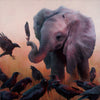
It amazes me every day that we are mostly teaching people how to observe things that we see everyday but are not consciously aware of. I like to tell people that once you see it, you can’t unsee it. It goes with drawing, color, everything.
Read More 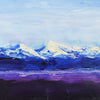
So often painters have thousands of reasons why not to paint. I have a mantra: "Just hush up and paint!" My three simple rules to painting...
Read More 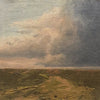
Memory plays an important role in my process. I don’t have the exact quote, but I read that Thomas Cole believed his memory filtered out all unnecessary clutter from a scene, leaving only the essential information that actually made an impact on him at the moment of inspiration. I’ve found this to be true, and with practice over time, relying on my memory has strengthened my observation skills, improving my painting efficiency by leaps and bounds.
Read More 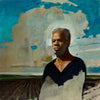
Most students I encounter seem to come to my courses with an interest in learning “Indirect Painting” techniques as per the 17th Century; for emulation of painters like Van Dyck, Rubens, Velazquez, Ribera, Rembrandt and even dipping back into the 16th century a bit for Caravaggio. The principal reason in practicing Indirect Painting is that it precipitates painting effects which are principally fleshy in nature, and of the flesh.
Read More 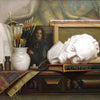
I begin a painting working from dark to light, transparent to opaque. The example I give to my students is Land and Sea. The shadows are like the sea, darker, more transparent and flat. The lights represent the mountainous landscape, opaque, thick paint, full of texture. In terms of value we look at a pyramid, with the darks at ground level and each step up a value lighter. So our highlight is at its smallest and highest peak.
Read More 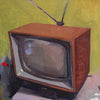
It seems that the impression that prevails is that to paint great paintings you must find great secrets, and that it will be unimaginably complex. This is putting the cart before the horse as far as a student's concerns should go. First you must learn a craft which is separate from learning to be an artist. Then you can learn to be an artist, which is really just about age and wisdom, and bravery.
Read More 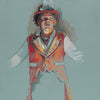
Light and shadow is the way we can see and make sense of things, so an understanding of the mechanics of light and shadow is paramount. The shapes created by them are probably the most useful, yet the most easily-overlooked way to infuse your images with emotion and psychological depth.
Read More 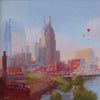
It usually starts with a walk outside. I'll see a shadow or a color or shape and begin to imagine how that could be developed into a painting. Although my paintings are representational, I always start with abstract elements.
Read More 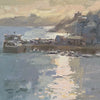
Often my work is location based so it’s a case of arranging to be in a certain place and then being inspired by what I see there on the day. I don’t like to have a preconceived idea of the motif I will choose to paint in advance. I like to arrive with open eyes and choose what arrests me the most which is usually an effect of the light.
Read More 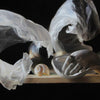
When I paint with an Indirect method, I have the luxury of building up my darks with several layers. A few thin layers of a chromatic black mixture makes an excellent, deep black, and many people who see my paintings are surprised to learn I don’t use black.
Read More 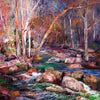
The colors, values and edges should all support the main theme of the painting. Good landscape painting has to be more than just rendering what you are seeing. You must find a way to incorporate your own sense of individual excitement about what’s going on before you and what it is doing to your senses.
Read More 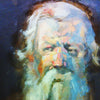
Painting all about movement, it is, capturing or creating the movement, try to draw the dance and the dancer not. The responsibility of the draughtsman to make the drawing come alive beyond mere representation, is it. Empathy with the movement in the pose and translate it in a manner that the viewer feels it, one has to have.
Read More 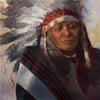
Novorealism is a philosophy of painting works that inspire and emanate beauty. It’s returning art back to what it has lost, which is beauty. This scene to me was beautiful and I am inclined to paint the beautiful things I SEE. This is the reason I paint, to paint something beautiful.
Read More 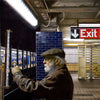
I knew from the age of 5 that I would be an artist. All through my childhood and teens, drawing and painting were my favorite skills. When I left high school to lead a life as an artist it was sink or swim, there was no second choice.
Read More 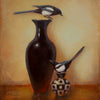
It all started when I was a little girl, I would save injured birds and nurse them back to health. Sometimes, I would try to catch the birds that flocked to our yard. Out of frustration, I finally decided to capture the birds on paper with a pencil. I have been drawing and painting birds and nature ever since! In fact, today you can see birds in most of my still life and nature paintings.
Read More 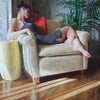
I find many painters struggle with drawing and correct proportions. One becomes so excited to put color down that we forget painting is really just drawing... with paint. Proper training can overcome this, and I can attest that slowing down and allowing yourself time to really SEE and understand the subject in front of you can have incredible affect.
Read More 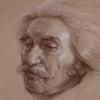
Application of the Skill – if you have the ability to express, then what is it that you are expressing and why? Just to sell more “units” would not be the right answer. The important part in this is by contemplating and exercising the “application” you inevitably find what “skill” you need to gain. This is how I believe Intent and Content drive the Form.
Read More 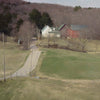
I think the most common problem students make is that they don’t ask themselves what they want their paintings to say. They set up and start to paint without asking even the most basic questions: What am I painting? Do I want this piece to be about the sky or do I want this painting to be about the trees? Do I want to emphasize the darks? Where do I want my point of view to be?
Read More 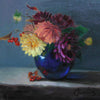
Draw, draw and draw... it is all about drawing. Drawing is a skill necessary for painting in the representational style, whether it is impressionist or classical. After drawing comes painting. It is very important to paint from life first, then use photographs in addition if you really need to. I know it is not always possible to paint from life, however, only painting from photos will eventually hamper your ability to become really excellent.
Read More 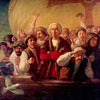
When at the age of 13 I switched from watercolor to oil, I found it to be an enormous challenge and even felt that my drawings were much stronger than my paintings. When I shared these concerns with my professor, he said not to worry about this and just "keep drawing and the painting skill will come". Many years passed by since then and the longer it goes the more I'm convinced in my realization of the wisdom of his words.
Read More 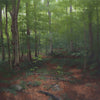
I like the process of understanding. I think my greatest works are those where I really understood my subject and how to describe it.
Read More 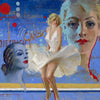
I started drawing at the age of three and there was no doubt as to my desire to become an artist. I left school before my 16th birthday to work as a comic book artist. In my late twenties, I turned to portraits, landscapes, and figures.
Read More 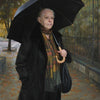
One of the most important, and recent, lessons I have learned is the awareness of opaque and transparent paint to describe the sense of light on form. I recall standing in front of a Cecilia Beaux painting and seeing an area of the painting that was describing a woman’s sleeve. The use of transparent and opaque paint in that area was so effective and dimensional that I felt as if I could stick my hand into the painting and it would actually have dimension.
Read More 
I’ve never NOT thought of myself as an artist. Even when I was building a career as a health care executive, I took life drawing open studios over my lunch hours at the nearby Phoenix Art Museum, and instead of taking a trip to a tropical location during my vacations, I took art workshops.
Read More 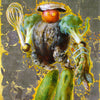
WHAT IS THE MOST IMPORTANT LESSON YOU HAVE LEARNED FROM PAINTING?
Learning to trust myself about what I am putting on the canvas and having fun with it.
Read More 

































